The Sweet and Rich History of Dominican Chocolate
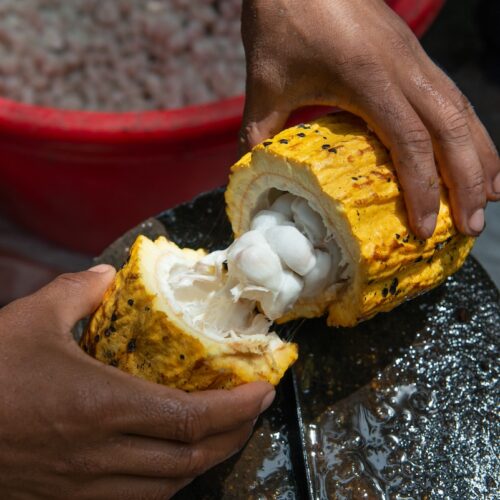
Chocolate has been a beloved treat for centuries, and the Dominican Republic is one of the world’s top producers of this delicious commodity. In this article, we’ll explore the history and production of Dominican chocolate, and how it has become an important part of the country’s culture and economy.
History
Chocolate is one of the most beloved and indulgent treats around the world, and the Dominican Republic is known for producing some of the best quality cocoa in the world. But what is the history behind this rich and decadent product?
The history of chocolate in the Dominican Republic dates back to the time of the ancient Mayans and Aztecs. These indigenous communities used cocoa beans for medicinal purposes and as a currency for trading. When the Spanish arrived in the Dominican Republic in the 16th century, they quickly recognized the value of cocoa beans and began to cultivate them for export to Europe.
During the 19th and early 20th centuries, the Dominican Republic was one of the world’s leading cocoa producers. However, in the mid-20th century, the industry declined due to factors such as the spread of disease and the introduction of synthetic flavors. But in recent years, there has been a resurgence of interest in Dominican chocolate, and the country has once again become a major player in the global cocoa industry.
Today, the Dominican Republic is home to over 50,000 cocoa farmers who grow high-quality cocoa beans using sustainable and environmentally-friendly practices. These beans are used by both local chocolatiers and international brands to produce a wide range of chocolate products, from chocolate bars and truffles to cocoa powder and hot chocolate.
One of the reasons why Dominican chocolate is so highly regarded is due to its unique flavor profile. The country’s cocoa beans are known for their fruity and floral notes, which are a result of the country’s diverse terroir and the use of traditional cocoa farming methods.
In addition to being delicious, Dominican chocolate also has a positive impact on the local economy. The cocoa industry provides employment and income to thousands of people, and many chocolate companies work directly with farmers to ensure that they receive fair prices for their products.
Overall, the history of chocolate in the Dominican Republic is a story of resilience and innovation. Despite facing challenges over the years, the country’s cocoa industry has persevered and continues to produce some of the best quality chocolate in the world. So the next time you indulge in a bar of chocolate or sip a cup of hot cocoa, remember the rich history and cultural significance behind this beloved treat.
Chocolate Production in the Dominican Republic
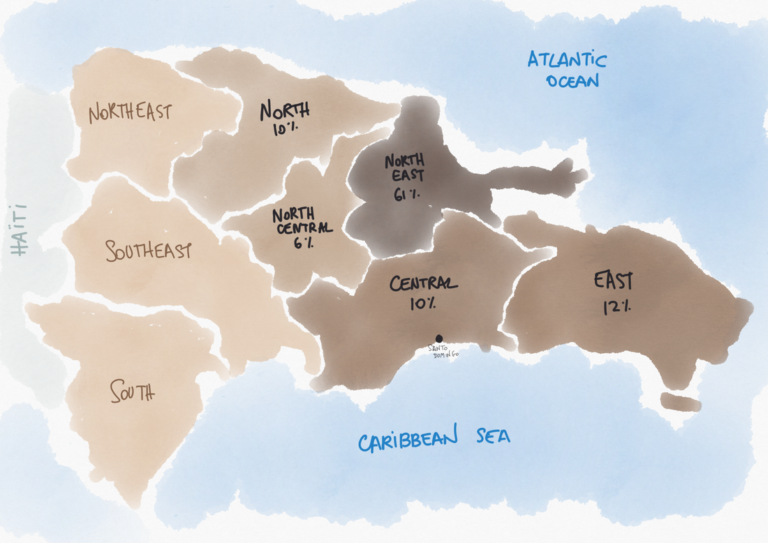
Chocolate is a delicious treat enjoyed all around the world, and the Dominican Republic has a long and rich history of producing some of the best chocolate in the world. In recent years, the country has become a major producer of organic and high-quality chocolate, with many small-scale producers making their mark on the industry.
The production of Dominican chocolate starts with the cacao tree, which is native to the Americas and was first domesticated by the Maya civilization over 2,000 years ago. The cacao tree produces large pods filled with cacao beans, which are harvested by hand and then fermented and dried in the sun.
Once the beans are dried, they are roasted to bring out their complex flavors and aromas. The roasted beans are then cracked open to reveal the cacao nibs, which are ground into a paste known as chocolate liquor. This chocolate liquor can be further processed into cocoa powder, or combined with sugar and other ingredients to create chocolate bars, truffles, and other confections.
One of the most important factors in the production of high-quality chocolate is the selection of cacao beans. The Dominican Republic is known for its high-quality, organic cacao beans, which are prized for their unique flavors and aromas. Many small-scale producers work directly with cacao farmers to ensure that they are using the best possible beans in their chocolate.
In addition to using high-quality cacao beans, many Dominican chocolate producers also focus on sustainable and environmentally-friendly production methods. This includes using solar energy to power their factories, using recycled packaging materials, and working with local farmers to promote sustainable agriculture practices.
The popularity of Dominican chocolate has been growing in recent years, both within the country and around the world. Many small-scale producers are gaining recognition for their unique and high-quality chocolate, and there are a growing number of chocolate festivals and events taking place in the Dominican Republic each year.
Overall, the production of Dominican chocolate is a fascinating process that combines tradition, innovation, and a deep love of chocolate. With its focus on high-quality, sustainable production methods, the Dominican Republic is poised to continue making its mark on the global chocolate industry for years to come.
Culture and Significance of Dominican Chocolate
Dominican chocolate has become an important part of the country’s culture, with many companies and organizations focused on preserving and promoting the art of chocolate making. The country even hosts an annual Chocolate Festival, where visitors can learn about the history and production of chocolate, as well as taste some of the finest chocolate products in the world.
Dominican chocolate is more than just a tasty treat – it’s an important part of the country’s culture. In fact, chocolate is so significant in the Dominican Republic that it’s celebrated with its own holiday. National Chocolate Day is observed on July 7th each year and is a time to indulge in all things chocolate.
The country’s chocolate industry also plays a significant role in its economy. Cocoa is one of the country’s top exports, and many farmers rely on it for their livelihoods. In recent years, there has been a push to promote fair trade practices in the chocolate industry to ensure that farmers are paid fairly for their hard work.
Conclusion
Dominican chocolate is a unique and delicious treat that has a rich history and plays an important role in the country’s economy and culture. Whether you enjoy it as a drink, in a bar of chocolate, or as a dessert topping, Dominican chocolate is a must-try for anyone with a sweet tooth.
The Delicious World of Dominican Cacao
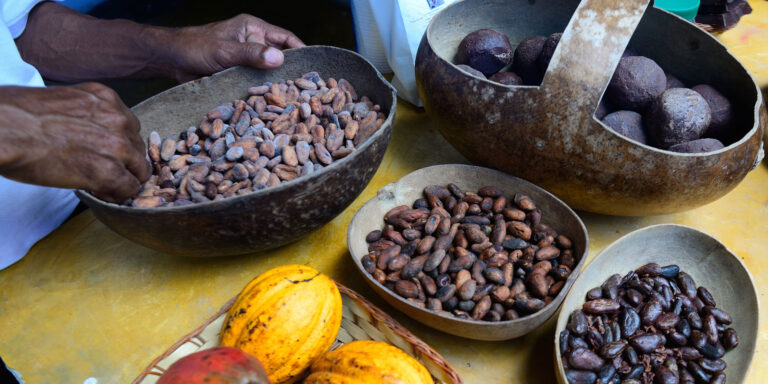
The Dominican Republic is well-known for its stunning beaches, vibrant culture, and mouth-watering cuisine. One of the country’s hidden treasures is its delicious cacao, which is highly sought after by chocolatiers all over the world. In this article, we’ll explore the history of Dominican cacao, the different types of cacao grown in the country, and some of the best ways to enjoy this delectable treat.
History of Dominican Cacao
The history of cacao in the Dominican Republic dates back to the pre-Columbian era, where the Taino people used the fruit of the cacao tree to create a ceremonial drink. When Christopher Columbus arrived in the late 15th century, he was introduced to this beverage and brought the cacao beans back to Spain, where it became popular throughout Europe.
The Dominican Republic became a major producer of cacao in the late 19th century, during a time when the country’s economy was heavily dependent on agriculture. Cacao quickly became one of the country’s most important crops, and by the early 20th century, the Dominican Republic was one of the world’s leading producers of cacao.
During this time, the country’s cacao industry faced several challenges, including the effects of the Great Depression, which caused a decline in demand for luxury goods such as chocolate. Additionally, the rise of synthetic substitutes for cocoa butter led to a decrease in the price of cacao, making it less profitable for farmers.
Despite these challenges, the Dominican Republic continued to produce high-quality cacao, and in the late 20th century, a renewed interest in gourmet chocolate led to a resurgence of the country’s cacao industry. Today, the Dominican Republic is known for producing some of the world’s finest cacao beans, which are used by many of the world’s top chocolatiers.
In recent years, the country’s cacao industry has faced new challenges, including competition from other cacao-producing countries and the effects of climate change. However, the Dominican Republic remains a major player in the global cacao market, and the country’s cacao beans are highly sought after by chocolate makers around the world.
Overall, the history of cacao in the Dominican Republic is one of resilience and innovation. Despite facing numerous challenges over the years, the country’s cacao industry has remained a vital part of its economy and cultural heritage, and it continues to be a source of pride for the people of the Dominican Republic.
Types of Dominican Cacao
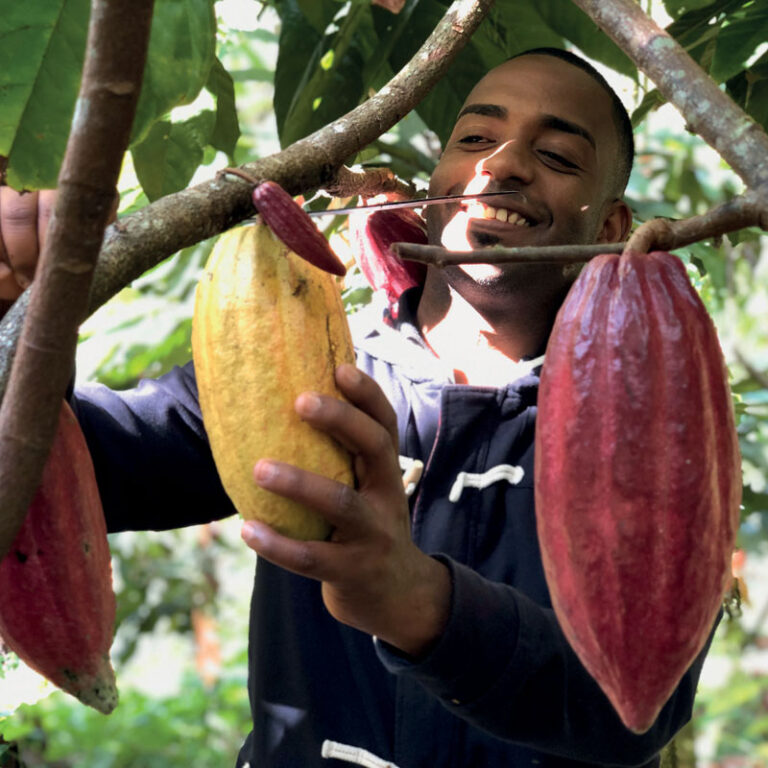
The Dominican Republic is a significant producer of cacao, the key ingredient in chocolate. The country’s fertile soil and tropical climate provide an ideal environment for growing high-quality cacao beans. There are several types of Dominican cacao, each with unique characteristics and flavors.
- Hispaniola
The Hispaniola cacao bean is exclusive to the Dominican Republic, and it is the country’s most well-known cacao variety. It is grown in the fertile valleys of the Cibao region, which receives ample rainfall and is known for its rich soil. The Hispaniola cacao bean has a unique flavor profile, with notes of fruit, nuts, and honey.
- Sanchez
The Sanchez cacao bean is grown in the Samana region of the Dominican Republic, which is located on the country’s northeast coast. This cacao variety is known for its delicate flavor and aroma, which features notes of nuts and spices.
- Indio
The Indio cacao bean is grown in the southwestern region of the Dominican Republic, near the border with Haiti. This cacao variety is known for its rich flavor, which features notes of fruit and spice. It is often used to make high-quality dark chocolate.
- Reserva Zorzal
The Reserva Zorzal cacao bean is grown in the mountainous regions of the Dominican Republic, which receive ample rainfall and are known for their rich soil. This cacao variety is known for its complex flavor profile, which includes notes of fruit, nuts, and spices. It is often used to make premium chocolate bars.
- Redondo
The Redondo cacao bean is grown in the northwest region of the Dominican Republic, which is known for its dry climate and sandy soil. This cacao variety has a bold, robust flavor profile, with notes of coffee, caramel, and nuts.
In conclusion, the Dominican Republic is home to several varieties of cacao, each with unique flavors and characteristics. These cacao beans are used to make some of the world’s finest chocolates, and they are an essential part of the country’s rich cultural heritage.
Production of Dominican Cacao
The production of Dominican cacao is a fascinating process that involves many steps to ensure the beans are of the highest quality. The Dominican Republic has become known for producing some of the finest cacao beans in the world, and this can be attributed to their unique growing conditions, harvesting methods, and post-harvest processes.
Harvesting Cacao Cacao trees are typically grown in the shade, which helps to protect them from the sun’s intense rays. The trees produce pods that grow directly off the trunk and branches, and these pods contain cacao beans. When the pods are ripe, they are harvested by hand using machetes. Careful attention is paid to the harvesting process to ensure that only ripe pods are picked.
Fermentation After the pods are harvested, they are opened, and the cacao beans are removed. These beans are then placed in a fermentation box, where they are covered with banana leaves and left to ferment for several days. Fermentation is a crucial step in the cacao production process, as it helps to develop the flavor and aroma of the beans. During fermentation, the beans are stirred regularly to ensure that they are fermenting evenly.
Drying Once the beans have been fermented, they are spread out on trays and left to dry in the sun. This drying process can take several days, and it is important to ensure that the beans are not exposed to too much heat, as this can cause them to lose their flavor. The beans are regularly turned during the drying process to ensure that they are drying evenly.
Roasting After the beans have been dried, they are roasted to further develop their flavor. Roasting also helps to remove any residual moisture from the beans. The beans are typically roasted at a low temperature for a longer period of time to ensure that they are evenly roasted.
Grinding Once the beans have been roasted, they are ground into a paste called cocoa liquor. This paste is then processed further to produce cocoa powder and cocoa butter. The cocoa powder can be used to make hot chocolate, while the cocoa butter is used in many different applications, including cosmetics, soaps, and pharmaceuticals.
Conclusion The production of Dominican cacao is a complex and fascinating process that requires a lot of skill and attention to detail. From harvesting to roasting to grinding, each step is essential in producing high-quality cacao beans. The result is a product that is enjoyed all over the world and has become an essential part of Dominican culture.
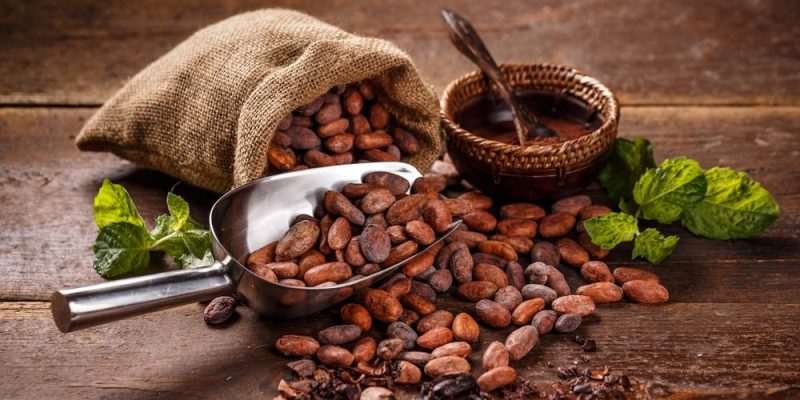
Culture of Dominican Chocolate
Chocolate is an integral part of Dominican culture and is used in many traditional dishes and drinks. One popular drink is hot chocolate, which is made by whisking together cocoa powder, sugar, and milk. Chocolate is also used to make desserts such as flan and cakes. In addition to its culinary uses, chocolate plays an important role in the country’s economy, providing employment opportunities for thousands of farmers and workers.
Conclusion
Dominican cacao is a true treasure, prized by chocolate lovers all over the world for its unique flavor and high quality. From its rich history to its labor-intensive production process and cultural significance, Dominican chocolate is an essential part of the country’s identity. Whether you’re enjoying a cup of hot chocolate or a decadent chocolate dessert, Dominican cacao is sure to tantalize your taste buds and leave you wanting more.
Exploring the World of Organic Cacao in the Dominican Republic
The Dominican Republic is one of the largest cacao producers in the world, known for its rich and flavorful beans. While the country has long been known for its traditional cacao production methods, a new movement is emerging that emphasizes organic and sustainable farming practices.
Organic cacao farming in the Dominican Republic is about more than just producing high-quality beans. It’s a way to support local farmers, protect the environment, and preserve the rich cultural history of cacao in the country.
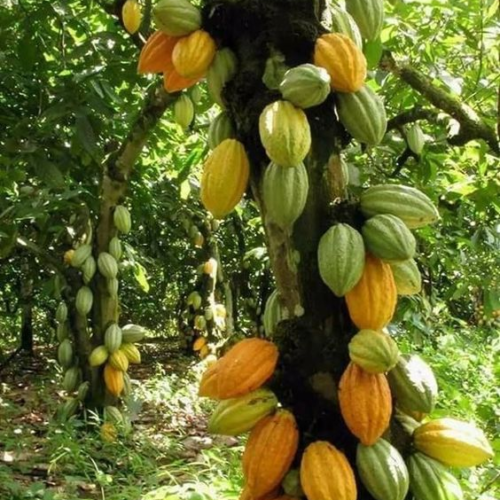
Production of Organic Cacao in the Dominican Republic
Organic cacao farming in the Dominican Republic is based on sustainable and environmentally friendly farming practices. Farmers use natural fertilizers and pesticides, as well as crop rotation and companion planting techniques, to ensure healthy soil and robust cacao trees.
The cacao is harvested by hand and carefully fermented and dried to bring out its full flavor potential. Many small-scale farmers sell their beans to cooperatives, which help them access the international market and ensure fair prices.
The Future of Organic Cacao in the Dominican Republic
Organic cacao farming is still a small part of the overall cacao industry in the Dominican Republic, but it is growing in popularity. Many farmers and cooperatives are turning to organic methods as a way to differentiate their products and access premium markets.
In addition to supporting local communities and preserving cultural heritage, organic cacao farming also has environmental benefits. It helps protect biodiversity, reduces pollution and erosion, and supports healthy ecosystems.
As demand for organic and sustainably produced foods continues to grow, the future looks bright for organic cacao in the Dominican Republic. With its rich history and commitment to traditional farming practices, the country is well-positioned to be a leader in this emerging market.
Discovering the Sweetness of the Dominican Republic with Cacao Excursions
The Dominican Republic is known for its vast fields of cacao trees that produce some of the finest cacao beans in the world. Cacao has been a vital part of the Dominican Republic’s economy for many years, and the country’s love for the sweet treat is evident in its many cacao excursions.
If you’re a chocolate lover looking to experience the journey from cacao tree to chocolate bar, then the Dominican Republic is the place to be. In this article, we’ll take you on a virtual tour of the best cacao excursions in the country.
- Chocal Chocolate Factory Tour
The Chocal Chocolate Factory is located in the town of Yamasá, about an hour’s drive from Santo Domingo. Here, visitors get the chance to tour the factory and learn about the entire chocolate-making process, from harvesting the cacao pods to molding the chocolate bars.
You’ll also get to taste some of the freshest and most delicious chocolate you’ve ever had, made entirely from organic Dominican cacao beans.
- Rancho Guavaberry Cacao Tour
If you’re looking for a more hands-on experience, the Rancho Guavaberry Cacao Tour in Higüey is a must-visit. Here, you’ll get to help harvest and roast the cacao beans before grinding them into a fine paste to make chocolate.
You’ll also learn about the history of cacao cultivation in the Dominican Republic and its importance to the local economy. And, of course, you’ll get to indulge in some delicious chocolate treats.
- Cacao Farm Tour with Taino Organic
Taino Organic is an eco-tourism company in the town of Los Hidalgos that offers a unique cacao farm tour. You’ll get to explore a working cacao plantation, learn about the different types of cacao trees and taste some of the freshly harvested cacao beans.
The tour ends with a chocolate-making workshop, where you’ll learn how to make your own chocolate bars using the freshly harvested cacao beans.
- Cacao Experience at Hotel Chocolat
Located in the town of La Romana, Hotel Chocolat is a boutique hotel that specializes in cacao experiences. The hotel offers a variety of chocolate-making workshops and cacao plantation tours that are perfect for chocolate enthusiasts.
You’ll get to taste different varieties of cacao beans and learn about their unique flavors and characteristics. And if you’re feeling adventurous, you can even try making your own chocolate from scratch.
Conclusion
Cacao excursions are a fantastic way to learn about the history and culture of the Dominican Republic while indulging in your love for chocolate. Whether you’re a seasoned chocolate lover or just looking for a unique adventure, these cacao tours are sure to satisfy your sweet tooth and leave you with a newfound appreciation for the magical world of cacao.



